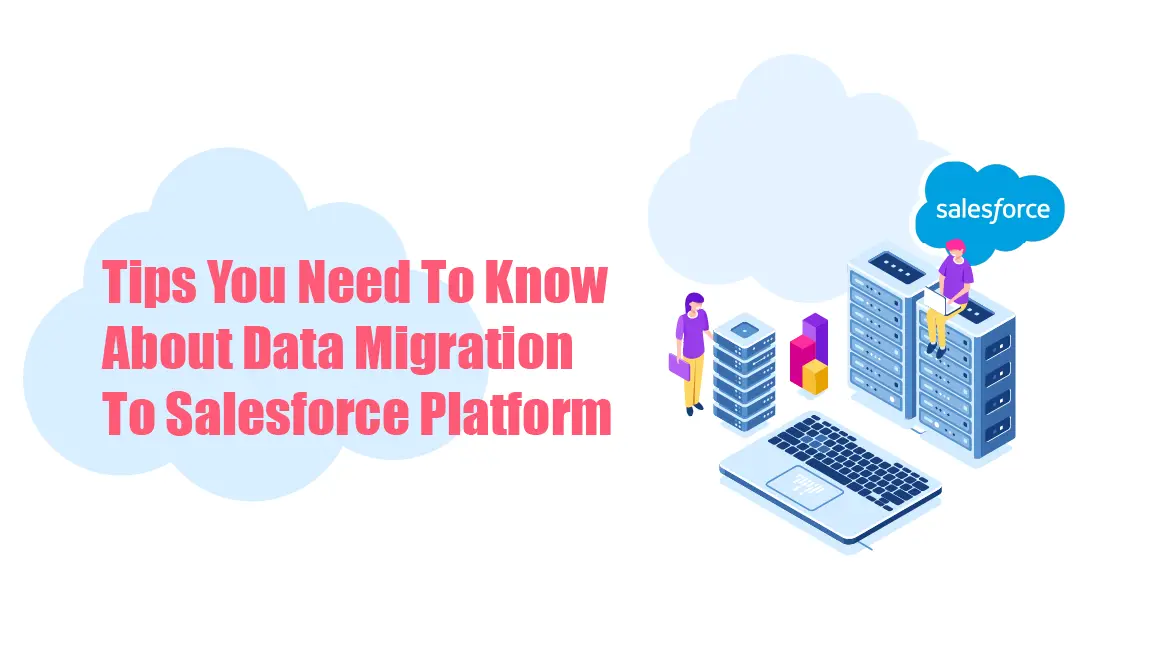Tips You Need To Know About Data Migration To Salesforce Platform
Introduction
The process of data migration to Salesforce platform can be quite acute because this includes considerable pre and post-migration activities. Migration implies the movement so it refers to the migration of data from one platform to another.
The migration requirement could be to adopt Salesforce or to upgrade to the new version; it depends on one’s business requirements. For any kind of data migration, a well-executed strategy is required, which can be achieved with the support of Salesforce consulting firms.
So, are you looking for data migration to Salesforce? Look no further; here in the blog, we have covered everything important to know before diving into Data Migration.
Let’s get started!
Why Salesforce Data Migration Is Important
However, before we proceed to the explanation of data migration, we must first come up with data migration meaning. It refers to transferring data from one platform to another. It could be an on-premises database for Salesforce, or a legacy CRM system for Salesforce.
There are different types of data migration be it database migration, application migration, storage migration, or cloud migration. It is important to ensure the migration is accurate as it is very crucial for businesses. The data plays a significant role in making business decisions and driving growth.
Challenges To Tackle During Data Migration
Data migration is a tedious job to be done. It plays an important role in adopting Salesforce or integrating with other systems. There are multiple benefits of data migration like data management and improved business insights. But it has its set of challenges that can be tackled. Here are some highlights of the common challenges you can face.
- Complex, and inconsistent data can lead to errors and post-migration issues.
- Underestimating the time to migrate data can disrupt business operations and impact productivity.
- Data security and compliance with regulatory requirements during migration are crucial to protecting sensitive information.
Steps Of the Data Migration Process
For a successful migration of data, you need to plan your strategy. Here are a few general phases that you should follow:
Preparation For Data Migration Project
Thoroughly preparing data migration is the first and most important step of this procedure as a whole. To keep the project on course, you must first create goals in the form of deadlines and milestones. Additionally, you must identify your key stakeholders as they are crucial to decision-making in the migration process.
The planning part includes many key sub-points that need to be taken care of. Highlighting a few of them for you:
- You must understand the data, examine the source system, identify your data field, and determine if data needs to be modified, converted, or restructured during migration.
- Mapping data fields between the source and target systems.
- Ensure that the migrated data is clean, accurate, and free from duplicate records.
- Choosing the right approach to migrate data is important whether through APIs, bulk exports, or direct database queries, evaluate the pros and cons of each method.
Data Migration
The next phase is the actual transfer of data, now you have to put your preparation into action. The actual transfer of data may be in batches or one go, depending on what you have chosen. There should be continuous monitoring required to fix any issue that arises.
During the migration process, a few things need to be taken care of. Check out the few points that need to be considered:
- Perform a trial migration in a sandbox environment that helps you to identify and address potential issues before the actual migration.
- Check that the variables are mapped properly.
- Check to see whether the contact’s relationships are still valid.
Post Migration Tasks
Once the migration is complete, some post-migration tasks must be taken care of. By now you have checked all your data. Also, you have verified the correct relationships between records. Now it’s time for user training and post support to the client.
- You should provide comprehensive training to all the users, which covers navigation, regular tasks, and any new features involved during migration.
- You need to establish a support system where issues can be resolved on a priority basis.
- Continuous monitoring is required, including load time, responsiveness, and optimization if needed.
- Regular security and compliance checks need to be done.
- Regular maintenance is needed and may involve updating features and customizations, managing integrations, and gathering user feedback for long-term success.
Key Tips For Data Migration To the Salesforce Platform
Data migration may have many issues like repeating the entire process, and rollback due to some common mistakes that were not taken care of at the initial stage. We are highlighting the key tips for data migration to reduce such issues.
- It is important to determine the order of migration before getting into it.
- Create a workbook on data mapping and it may vary depending on your business requirements.
- Create timelines for your project based on the data issues.
- To maintain data quality and accuracy train users on best data management practices.
- Consider the importance of Salesforce consulting partners for your smooth and hassle-free data migration process.
Conclusion
The blog has given you an overview of the data migration process. As told earlier it is a critical process that needs good planning altogether. Organizations can ensure a smooth and successful data migration by understanding and addressing these common challenges.
Our experts at The Pinq Clouds lay the foundation for leveraging the full potential of Salesforce for improved business performance and growth. Our Salesforce data migration service will give you a smooth transition experience.
Are you ready to take a hassle-free data migration journey with us? Do fix a call with our expertise now, and also keep yourself updated with our insightful blogs.



